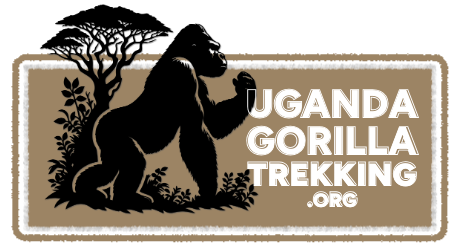Echuya Forest: Uganda’s Enchanted Montane Rainforest
Hidden in the misty highlands of southwestern Uganda, Echuya Forest is one of the oldest montane forests in East Africa and a treasure trove of biodiversity. Nestled near the border with Rwanda and the Democratic Republic of Congo, this lush rainforest covers approximately 5,000 hectares and rises to altitudes between 1,700 and 2,300 meters above sea level. Echuya Forest is a sanctuary for wildlife, endemic plants, and bird species, and offers travelers an immersive experience in one of Uganda’s most pristine highland ecosystems.
Geography and Natural Setting
Echuya Forest is part of the Albertine Rift, a biodiversity hotspot recognized for its ecological richness. The forest is characterized by steep hills, valleys, and a network of streams that flow into the surrounding lakes and rivers. Its canopy is dense and layered, with towering trees, bamboo groves, ferns, and epiphytes creating a verdant mosaic. Mist often hangs over the forest, lending it a mystical atmosphere that enhances its sense of seclusion and tranquility.
The forest’s volcanic soils support a wide array of flora, including endemic and medicinal plants, orchids, and moss-covered trees. This highland environment also regulates water flow into nearby ecosystems, making Echuya Forest an ecological cornerstone in southwestern Uganda.
Hiking and Exploration
Echuya Forest offers a variety of hiking and trekking experiences for different levels of adventurers. Trails wind through bamboo groves, montane forests, and open highland meadows, with hikes ranging from short 2-hour walks to full-day treks. Guided walks allow visitors to explore the forest safely while gaining insights into its ecological and cultural significance.
One of the most rewarding experiences is trekking to the forest’s higher altitudes, where panoramic views of the Virunga Volcanoes, surrounding hills, and distant valleys emerge above the mist. Early morning hikes are particularly magical, with mist weaving through the trees and birds singing amidst the dense foliage.
Wildlife and Flora
Echuya Forest is teeming with wildlife, making it a haven for ecotourists and wildlife enthusiasts. Primates such as L’Hoest’s monkeys, black-and-white colobus monkeys, and vervet monkeys are common, while the elusive golden monkeys can sometimes be spotted in bamboo zones. Small mammals like duikers and bushbucks inhabit the forest undergrowth.
The forest is also a birdwatcher’s paradise, with over 150 bird species recorded. Endemic species and Albertine Rift specialists such as the mountain illadopsis, Grauer’s warbler, and African green broadbill attract birdwatchers from around the world. Amphibians and butterflies add further vibrancy to this montane ecosystem, making every hike a sensory adventure.
Flora in Echuya Forest is equally remarkable. Towering trees form a dense canopy, while ferns, mosses, and orchids cover the understory. Bamboo groves provide critical habitat for primates, and seasonal flowers add bursts of color. This rich biodiversity is part of what makes Echuya Forest a critical conservation area in Uganda.
Cultural Connections
Local Batwa and Bakiga communities have lived in and around Echuya Forest for generations. The Batwa, in particular, have deep cultural ties to the forest, using it for food, medicine, and spiritual practices. Guided visits with local communities provide insight into traditional knowledge, sustainable forest use, and conservation efforts, adding a cultural dimension to the ecological experience.
Coffee and tea farms in nearby areas further enrich the visitor experience, allowing travelers to explore highland agriculture and engage with local livelihoods. These cultural interactions complement the natural beauty of the forest and deepen understanding of the human-environment connection.
Accommodation and Lodging
While there are no lodges inside Echuya Forest itself, nearby Kisoro and Mgahinga Gorilla National Park offer a range of accommodations. Options include eco-lodges with panoramic forest or volcanic views, boutique guesthouses, and mid-range hotels. Many lodges organize guided forest walks, primate tracking excursions, and cultural tours, allowing visitors to experience the forest fully while enjoying comfortable lodging nearby.
Staying near the forest also allows for early morning exploration when wildlife activity is high and mist enhances the mystical atmosphere of the montane environment.
Activities in Echuya Forest
Guided Forest Walks: Explore bamboo groves, montane forest, and highland meadows with knowledgeable guides.
Birdwatching: Spot rare and endemic bird species unique to the Albertine Rift.
Primate Tracking: Observe monkeys, duikers, and potentially golden monkeys in their natural habitats.
Photography: Capture misty forest landscapes, waterfalls, primates, and diverse flora.
Cultural Tours: Engage with Batwa and Bakiga communities to learn about traditional forest uses and local culture.
Best Time to Visit
The dry seasons, December to February and June to August, provide the best conditions for hiking, wildlife spotting, and photography. Trails are firm, visibility is clear, and early mornings are ideal for mist-filled forest landscapes. Wet seasons may make trails slippery and reduce visibility, but the forest remains lush and vibrant year-round.
Practical Travel Tips
Explore the forest with a licensed guide for safety and to gain ecological insights.
Wear sturdy hiking boots and layered clothing for varying temperatures.
Carry waterproof gear, water, and snacks.
Bring binoculars and a camera to fully enjoy birdwatching and wildlife photography.
Respect local communities and forest regulations, minimizing environmental impact.
Support eco-tourism and sustainable lodging in nearby areas.
Why Echuya Forest Should Be on Your Uganda Travel List
Echuya Forest is more than a montane rainforest—it is a sanctuary of biodiversity, cultural heritage, and adventure. Its misty hills, bamboo groves, rare wildlife, and endemic birds offer travelers a deeply immersive experience. Whether hiking, photographing, observing wildlife, or learning from local communities, Echuya Forest presents a highland adventure that is both exhilarating and spiritually enriching.
